Apuan Alps, what to see: 10 places not to miss
The Apuan Alps are the best possible answer to the question, “Sea or mountains?”: this mountain range is in fact a naturalistic paradise overlooking the Ligurian Sea, a unique environment that makes it possible to go in just a few tens of minutes from the peaks of mountains that touch two thousand meters to the glamorous beaches of Versilia or the crystal-clear waters of the Cinque Terre. The Apuan Alps, thanks to their privileged location on the extreme northern border of Tuscany but facing Liguria and with Emilia Romagna just a stone’s throw away, have always been a crossroads of peoples and cultures. The Apuan Alps, however, suspended as they are between the infinitely tending blue of the sea always on the horizon and the deep green of their meadows and forests, have carved out a leading place for themselves in history with a capital “S” thanks to another color: white. It is the white of its stones, the white of the Carrara marble that is found literally in every corner of the world and that has always inspired great artists, from Michelangelo Buonarroti to Antonio Canova, who have turned it, and are turning it, into absolute masterpieces. It was precisely around theexcavation and trade of Carrara marble that the millennia-long history of the Apuan Alps and its people developed. Cultivated since Roman times, the quarries of Carrara offer an unparalleled spectacle and bear imprinted in the snow-white walls of the mountains the signs traced by the sweat and toil of an entire people who have shaped the territory since ancient times to bring the precious marble blocks to the valley. However, the Apuan Alps are also a must-see destination for all lovers of the outdoors, who are spoiled for choice here thanks to a network of trails that touches every corner of this marvelous mountain range characterized by a unique biodiversity and able to offer a continuous succession of unique views. Here are ten stops not to be missed on your trip to the Apuan Alps.
1. The Apuan Alps Regional Park
Blue, green and white: these are the predominant colors in the Apuan Alps Regional Park, an enchanted place where the sea and the mountains dialogue continuously as well as man and nature. On the other hand, if when one walks along the ridges and valleys of the Apuan Alps the waters of the Mediterranean are ubiquitous companions in the background and frame now the islands of the Tuscan Archipelago now even Corsica, in the same way the impact of the people of these lands on these mountains is always well evident. The extraction of the famous Carrara marble, but also of other stones such as Cardoso stone, among others, has been particularly influential in shaping an area that has such characteristics as to make it unique in all of Italy. The Apuan Alps have a very rugged morphology, with their deep valleys and steeply sloping slopes. In the stretch of a few kilometers, starting from the short coastal plain of Apuo-versiliese, the Apuane rise to an altitude of almost two thousand meters with Mount Pisanino. Subterranean then, one encounters some of the highest expressions of the karst phenomenon with the great Apuan cavities, which are the result of an impressive labyrinth of tunnels and shafts: the Antro del Corchia, for example, with more than 70 kilometers of underground conduit development and 1210 meters of elevation difference, is the largest karst system in Italy and one of the largest in the world.
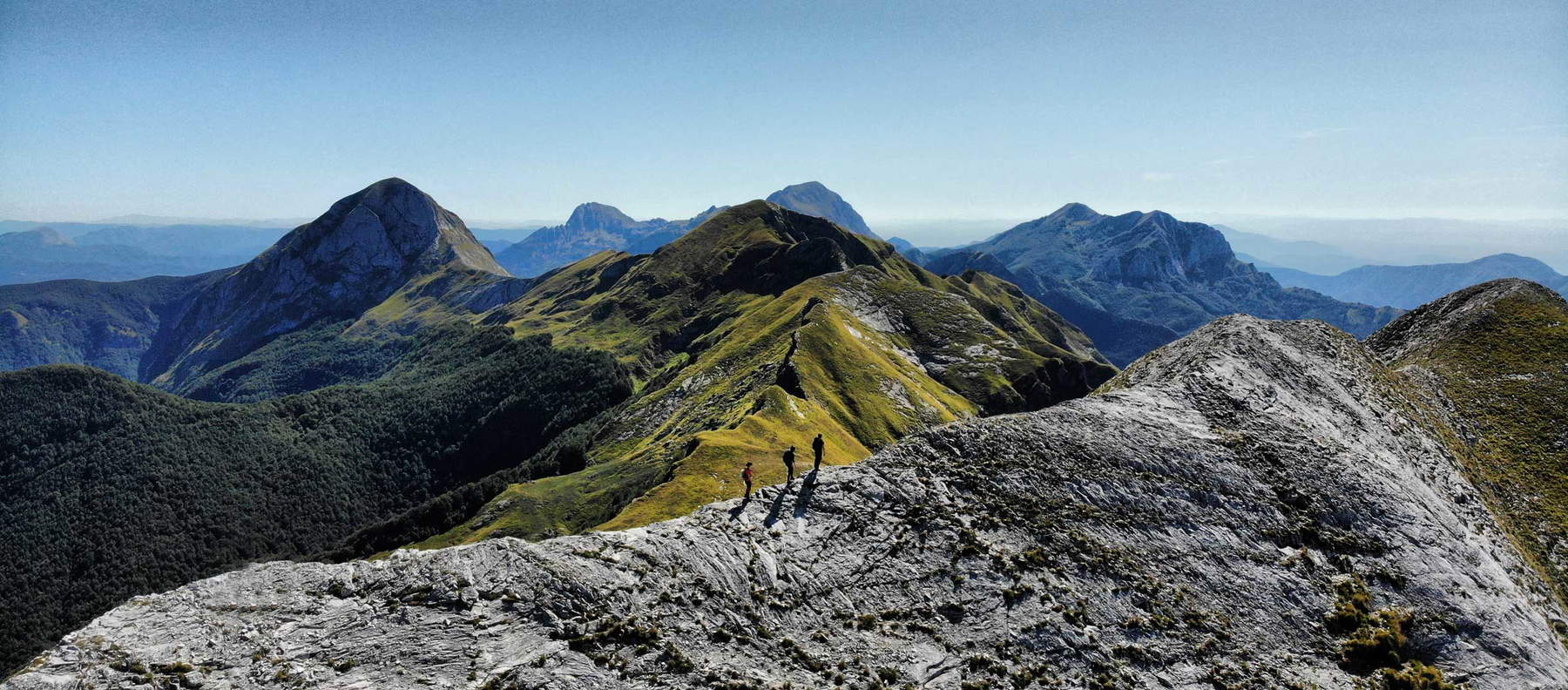
2. Carrara’s marble quarries.
Emperors and popes, princes and kings: the marble extracted from the Carrara quarries has been the material of excellence for more than two thousand years for creating great works of art, but also for lining churches, palaces and much more. This incessant work, which began at the time of the Romans who founded the rich city of Luni here, has made this land famous in every corner of the world. From the 80 or so quarries divided into the three basins that surround the historic center of Carrara, large immaculate blocks are brought down to the valley every day, which are then transformed into precious slabs or a magnificent sculptures. Michelangelo’s Pieta and David, but also the great masterpieces of Bernini, Canova and Donatello are just a few of the symbols in the history of world art that have been made from Carrara marble and are part of a potentially endless list that needs to be continually updated because even today this is the stone of choice for sculptors all over the world. Even before its transformation, however, the quarrying, sawing and transportation of marble itself have profoundly shaped every aspect of life in Carrara and its people. To retrace all the stages of the long and perilous process of marble quarrying is to take a journey through the history of this area and gradually pass by the workshops and sawmills where the blocks are processed and then back along the ancient roads for centuries traveled by ox-drawn wagons and then, before the arrival of trucks, by the puffing of trains. A visit to the quarries is a spectacle that cannot leave one indifferent, whether one looks at the white walls reflected in the distance in the waters of the sea or decides to penetrate into the heart of the earth to discover the immense tunnels, authentic underground cathedrals, where marble is extracted every day.
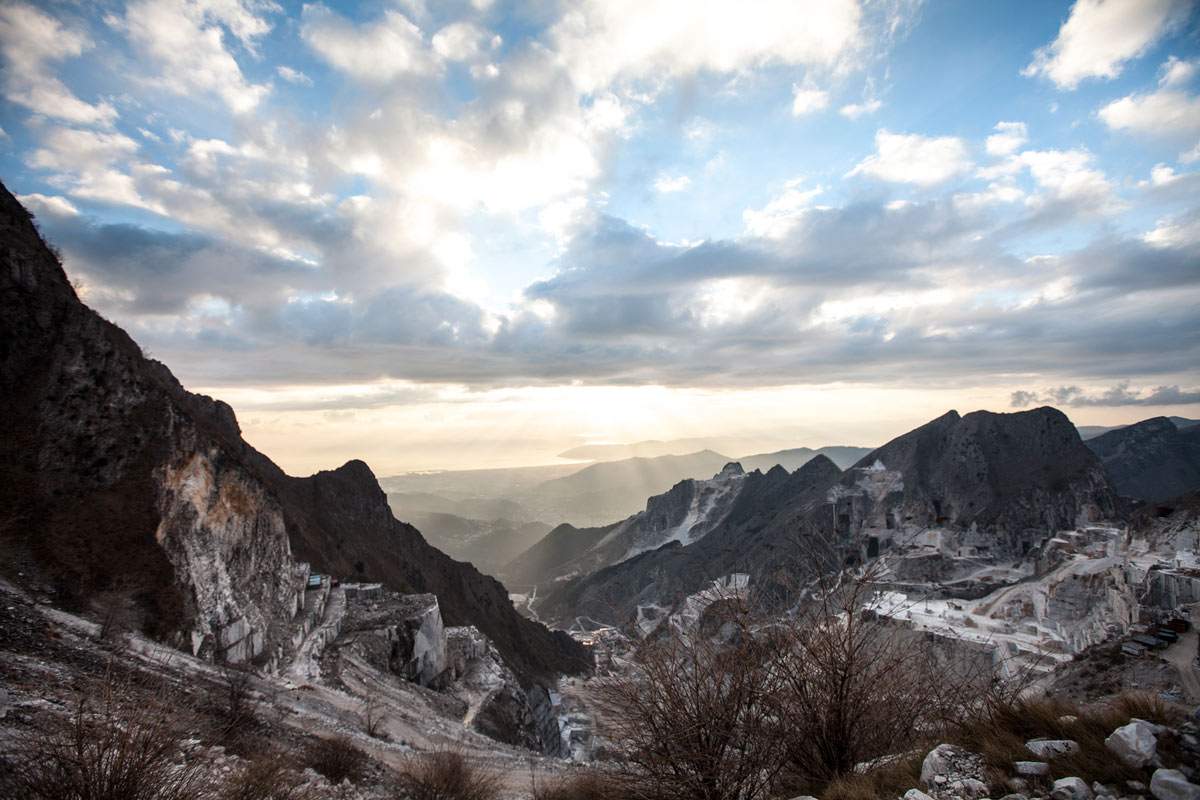
3. Colonnata
There is another immaculate treasure that characterizes the Apuan Alps: lard from Colonnata. This cured meat is definitely the symbolic food of this land and is strongly linked to this land. The secret of its goodness, moreover, lies entirely in the way it is prepared, curing for months in large marble basins in the workshops of Colonnata, a village of quarrymen that lies more than 500 meters above sea level surrounded by the white slopes of the Apuan Alps(click here to learn all about Colonnata). Around its lardo Colonnata has today built a vast hospitality system, and walking through the narrow streets of this ancient village one encounters many larderies and inns specializing in the sale of what is a product beloved by gourmets from all over the world. Colonnata is also, however, a perfect place to touch the rugged beauty of the Apuan land. Always a land of quarrymen, marble is ubiquitous throughout the village: in its houses, its streets, and its beautiful little church. Colonnata is then a privileged starting point for many excursions to discover the Apuan Alps. From here, walking for a little more than half an hour through chestnut woods, one can reach the ancient shepherds’ village of Vergheto and from there, passing over the quarries, reach the summit of Mount Sagro. Not to be missed is then a hike up to Gioia peak to admire the large colored David made by Brazilian street artist Kobra.
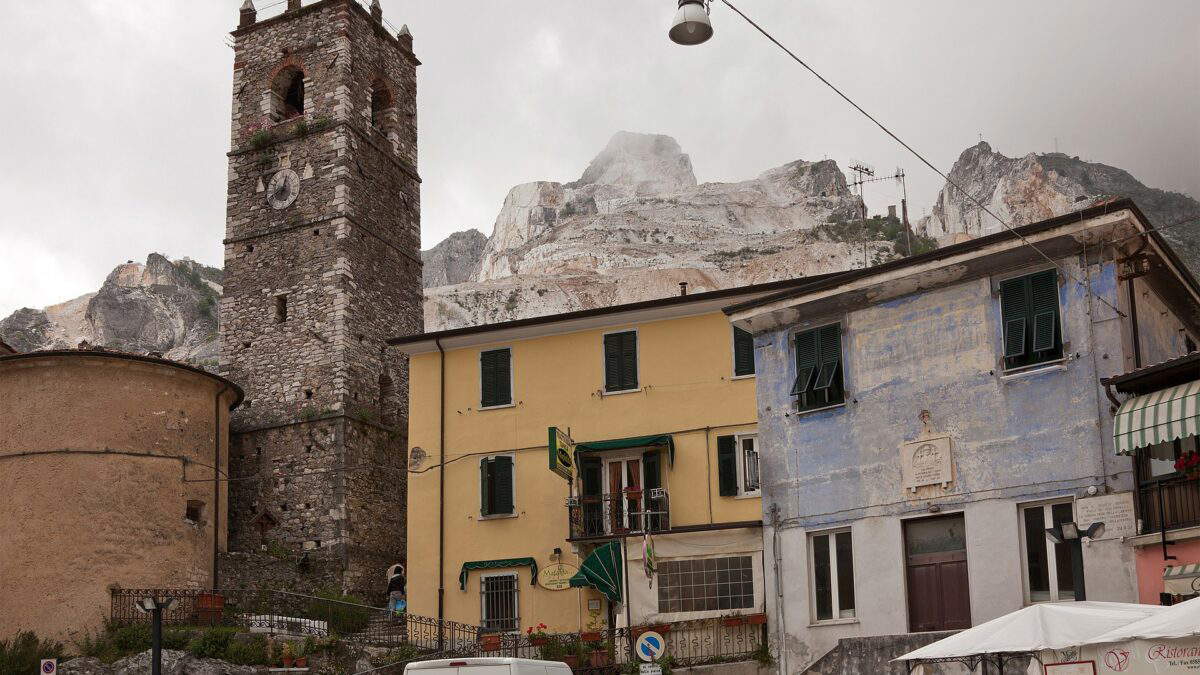
4. Campocecina
For anyone born in the shadow of the Apuan Alps, the Campocecina plateau is the place of choice for outdoor outings, nights under the stars and picnics, but for those coming to these parts for the first time it is simply a place that can take your breath away. Just a half-hour’s drive from the center of Carrara, Campocecina is an incredible balcony suspended between the sea and the Apuan Alps. Its famous meadows are more than 1,300 meters above sea level and are a large green area sandwiched between the peaks of Mounts Ballerino and Borla and the perfect place to relax outdoors and enjoy the spectacle of nature. In an environment that is still unspoiled despite being so close to the city, one can admire a unique panorama that goes from the Gulf of La Spezia and then embraces in a bird’s eye view the Ligurian Sea and the Tyrrhenian Sea with the islands of the Tuscan archipelago and Corsica and then again the entire coast of Versilia until well beyond the city of Livorno, the quarries and peaks of the Apuan Alps, with the Sagro that can be reached in little more than an hour on foot, and further away, those of the Apennines.
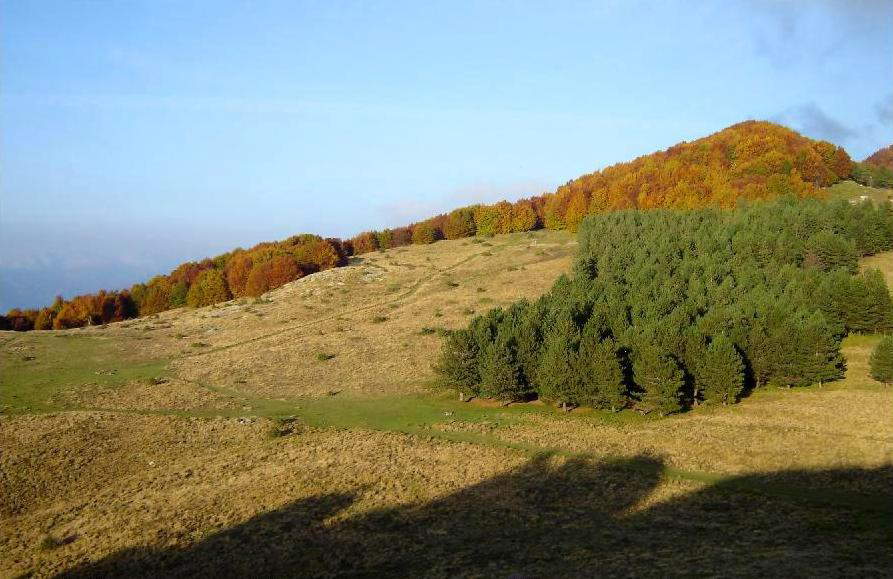
5. Stazzema
Stazzema is one of the main municipalities of Alta Versilia and is located in the southern part of the Apuan Alps, in the province of Lucca. Completely immersed in centuries-old forests and dominated by the high peaks of Pania and Corchia. Stazzema, with all its many hamlets, is the perfect destination to set out to discover this side of the Apuan Alps by climbing up and down the many paths that climb from the valley floor to the peaks. However, Stazzema is also famous for the terrible events experienced by its population during World War II. All of the Apuan Alps in those years were crossed by the Gothic Line, the German defense line that cut Italy from the Ligurian Sea to the Adriatic Sea, and were the scene of great battles, partisan struggles and, unfortunately, ferocious massacres by the Nazi-Fascists. At Sant’Anna di Stazzema on August 12, 1944 German troops together with men of the Social Republic massacred 560 people, including many children. Today those places are places of memory and sorrow: the large Peace Park and the Historical Museum of the Resistance are located here.
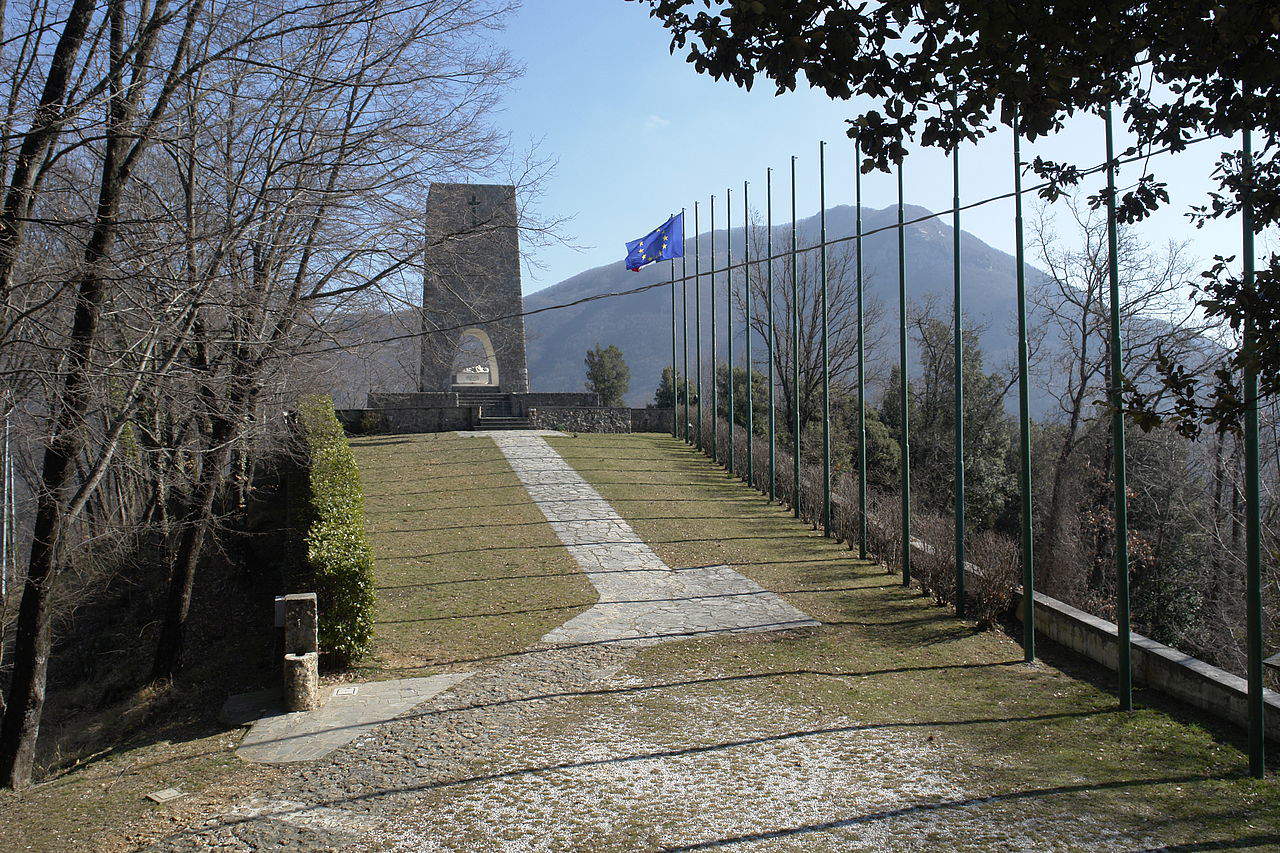
6. The Apuan Botanical Garden.
In Pian della Fioba, just minutes from the center of Massa, the“Pellegrini-Ansaldi” Apuan Alps Botanical Garden has been located for more than 50 years. At an altitude of almost 1,000 meters, the botanical garden offers visitors the opportunity to take a short nature hike along the path that leads up to a peak from which there is an enchanting view of the Apuan chain and the entire coastal area, from the Gulf of La Spezia to Versilia. Many are the wonders of the Apuan flora that can be admired in this short and easy itinerary. First of all, the whole area is home to species endemic to these mountains, but it is in general the whole garden that is really special. In its approximately three hectares of extension, situations peculiar to different areas of the Apuan Alps can be found, and different sectors can be identified there: thus, in the lower part there are the arboretum, the collection of chestnut trees, the pond with blueberry bushes, then in the larger part, the oak-harps wood with outcropping rocks on which the rupicolous vegetation settles.
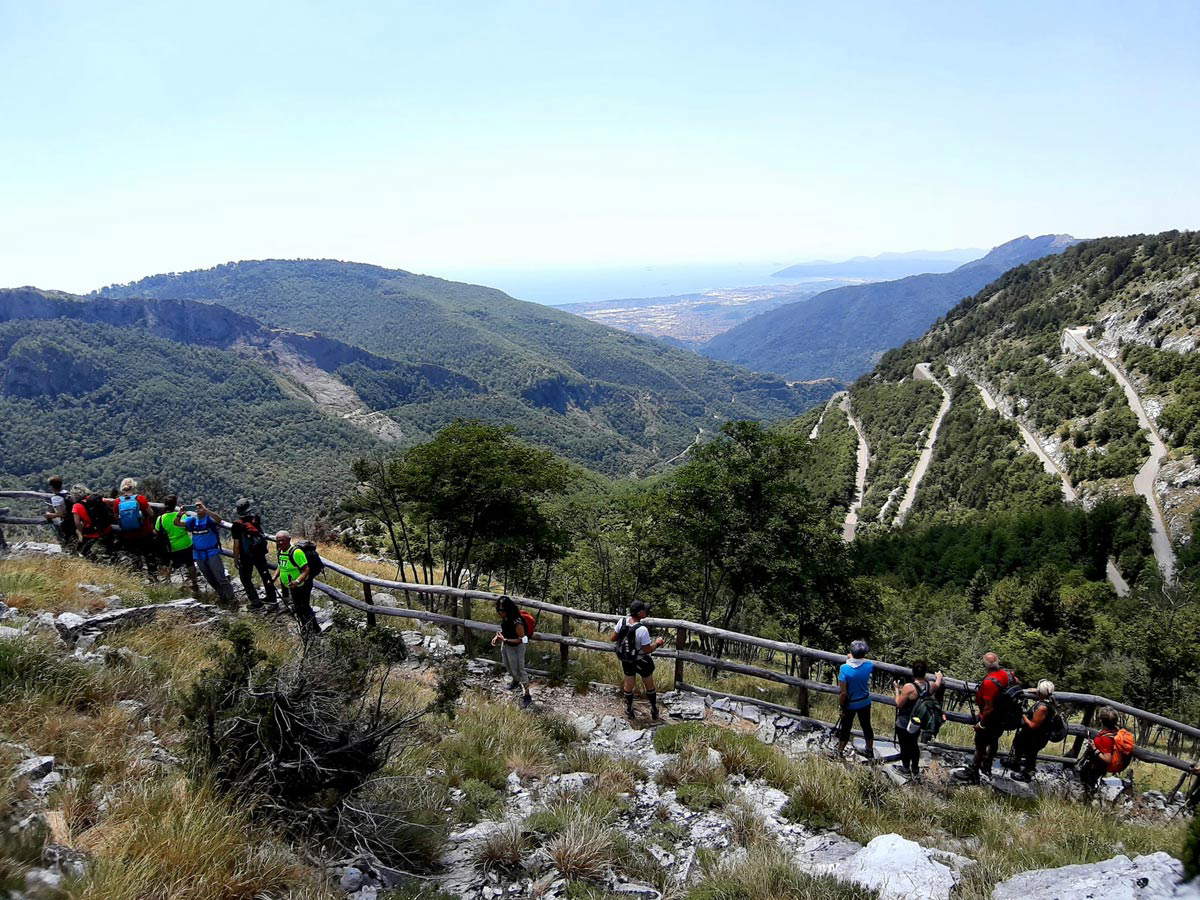
7. Gramolazzo Lake.
Lush forests, high peaks, clear waters. Gramolazzo Lake is an important naturalistic oasis in the heart of Garfagnana. We are in the province of Lucca, in the municipality of Minucciano, on the opposite side of the Apuan Alps from the sea and in valleys where life still flows with the slow rhythms of the past. In Gramolazzo there is a large hydroelectric reservoir built in the 1950s thanks to a barrage on the course of the Serchio River. The lake also collects water from the Acqua Bianca stream that comes from Gorfigliano and feeds the Fabbriche power plant below, which in turn pours water into Lake Vagli. Its particular location, however, makes Lake Gramolazzo a popular destination for tourists and travelers. The great protagonist of these picture-postcard landscapes is Mount Pisanino, the queen peak of the Apuan Alps, which from its nearly 2,000 meters is majestically reflected in the clear waters of the lake. From its shores then start many paths to be traveled on foot or by bike, but there is also no shortage of hotels, bars and restaurants where you can relax and enjoy some fresh air.
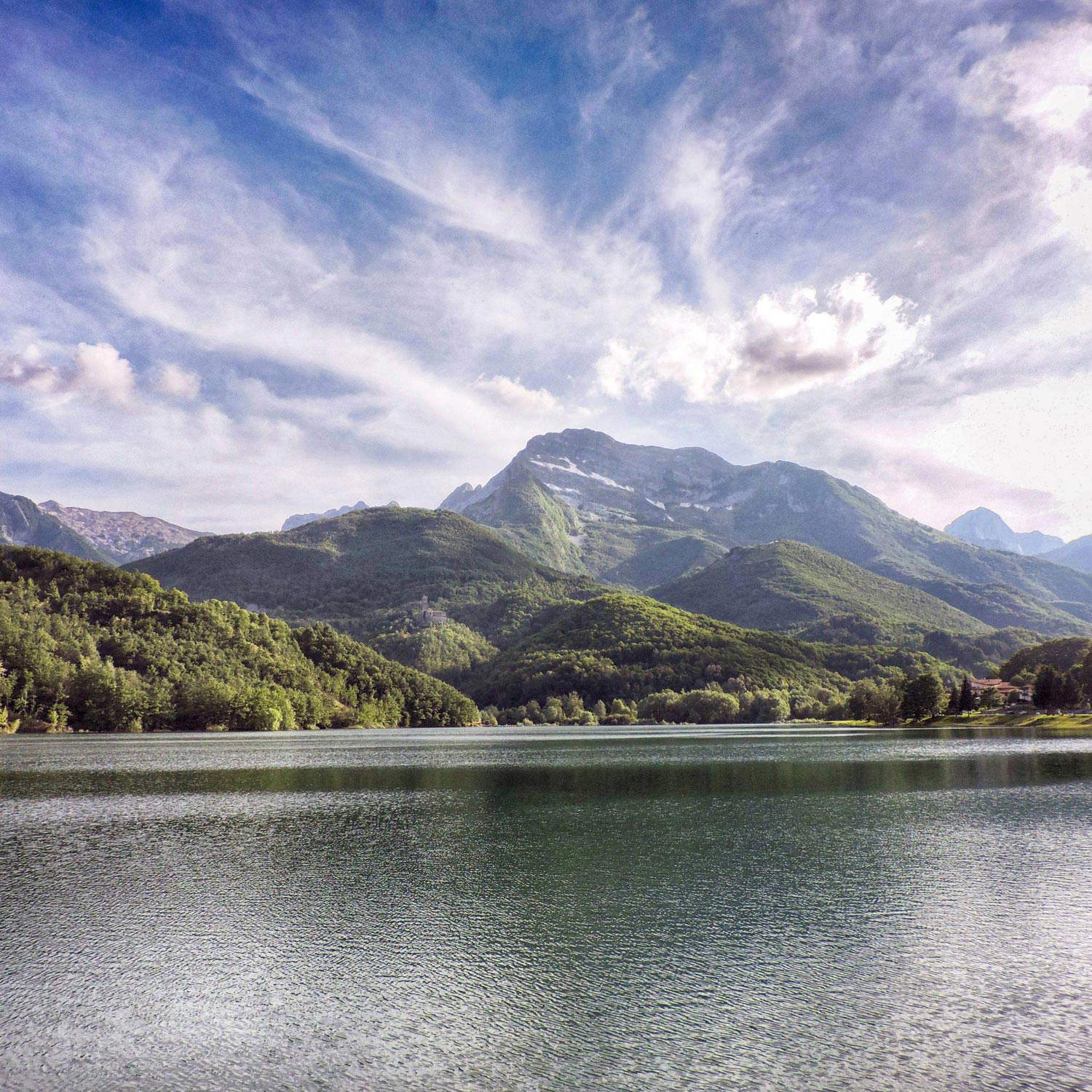
8. The Wind Cave
All the Apuan Alps are affected by important karst phenomena, and in some cases these give rise to authentic spectacles of nature. Among these is in its own right the Grotta del V ento in Fabbriche di Vergemoli. A jewel of the Garfagnana, the Grotta del Vento has been carved by the incessant action of atmospheric agents that have sculpted and shaped the limestone rocks, giving rise to majestic natural sculptures such as the Panie massif, the enormous natural arch of Mount Forato, the towers of Mount Procinto and the lunar landscape of the Vetricia plateau. Grotta del Vento is open year-round and offers its visitors three itineraries that allow them to go and get a close look at all aspects of underground karst including stalactites and stalagmites, small lakes, streams and even perfectly vertical shafts. All this can be reached by following perfectly lit paths and following the explanations of expert guides.
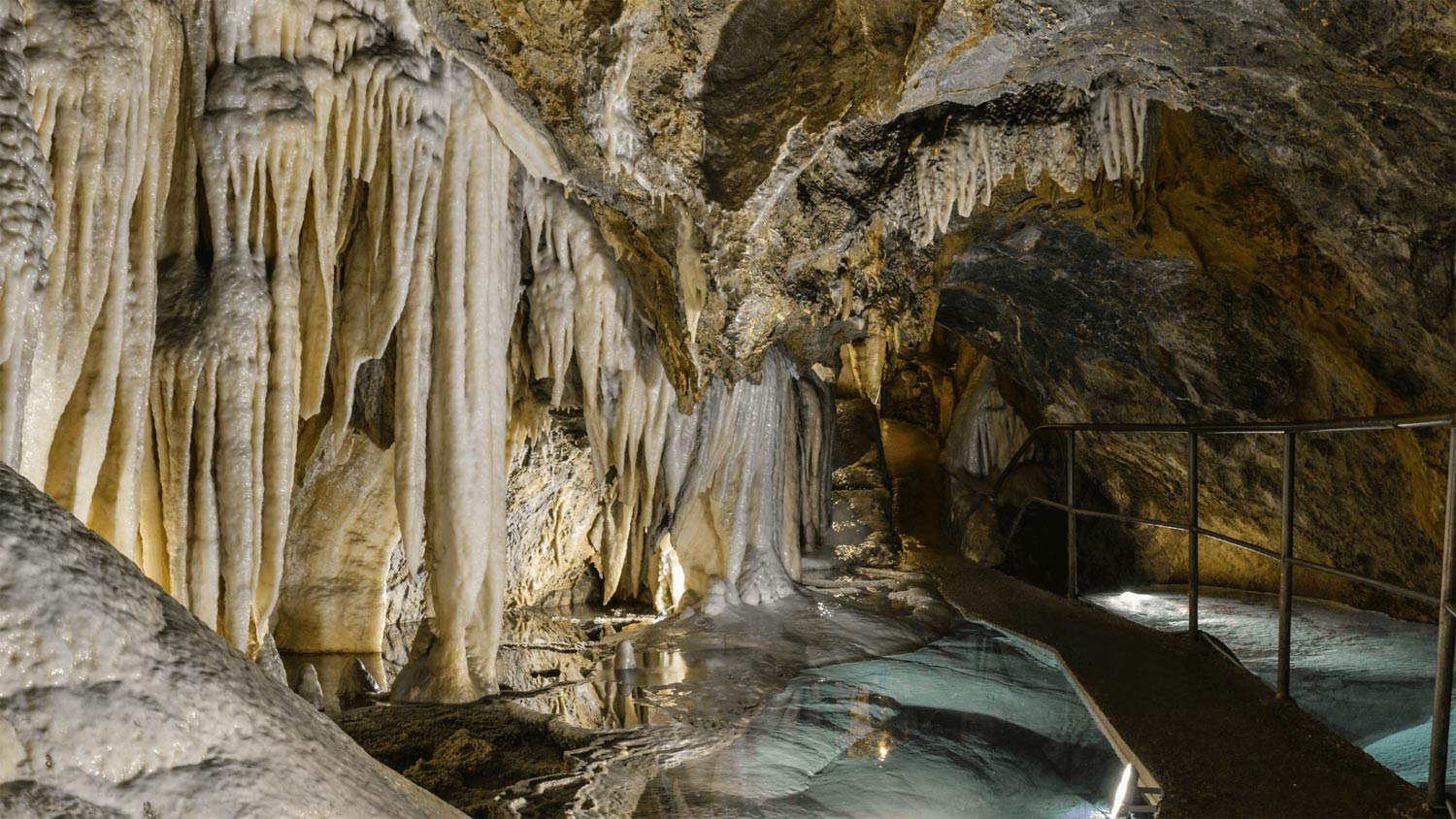
9. The Antro del Corchia
The Antro del Corchia is the largest underground environment in Italy and one of the largest in the world. It is a complex of tunnels, shafts and halls excavated by water over millions of years inside the marble heart of Mount Corchia, one of the mountains on the southern side of the Apuan Alps. To date about 70 kilometers of caves and as many as twenty different entrances have been explored and mapped, on each side of the mountain, but the explorations are ongoing and cavers continue to discover new halls and new beauties hidden in the marble. The tourist route is perfectly equipped and is also suitable for children. However, the Antro del Corchia is but the spearhead, the main attraction, of this corner of Alta Versilia: the Corchia Park.On Mount Corchia, it is also possible to visit the Piastraio quarry, the ancient mines of Argento Vivo, trek along the paths of the Gothic Line, visit the Levigliani museum system and enjoy the very rich local gastronomic offer, with the possibility of combining visits to the cave and quarry with wine and typical Versilia products tastings.
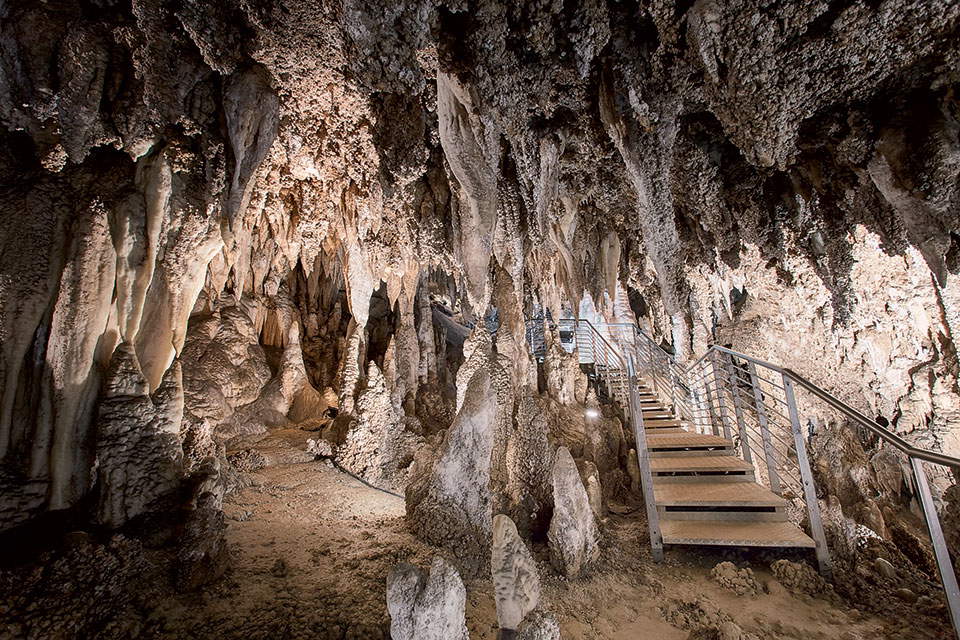
10. Lake Vagli
Lake Vagli is the largest hydroelectric reservoir in Tuscany and has been the absolute star of this Garfagnana valley since 1948. Here a large dam bars the course of the Edron stream and, in addition to feeding the nearby hydroelectric power plant, conceals from the world the traces of this land’s long past. Beneath the surface of the water lies the town of Fabbriche di Careggine, a small blacksmith village founded in the 13th century and completely submerged for more than seventy years. Cyclically, however, the lake is drained and the village resurfaces with its load of history. The magic of these places, however, lies in their unspoiled nature and the splendor of the high peaks of the Apuan Alps so much so that they are a beloved destination for trekking and mountaineering enthusiasts. From the dam to the village of Vagli di Sotto, one can walk along the road that skirts the lake offering beautiful views, while a short walk leads to the ancient village that culminates with the Romanesque church of San Regolo. Also suggestive is the 122-meter-long footbridge, designed in 1953 by engineer Riccardo Morandi, that connects Vagli di Sotto with Vaiano, the only swimming area on the lake and the arrival point of the Volo dell’Angelo, a zipper line over a kilometer long. There is also a suspension rope bridge connecting the two sides of the lake.
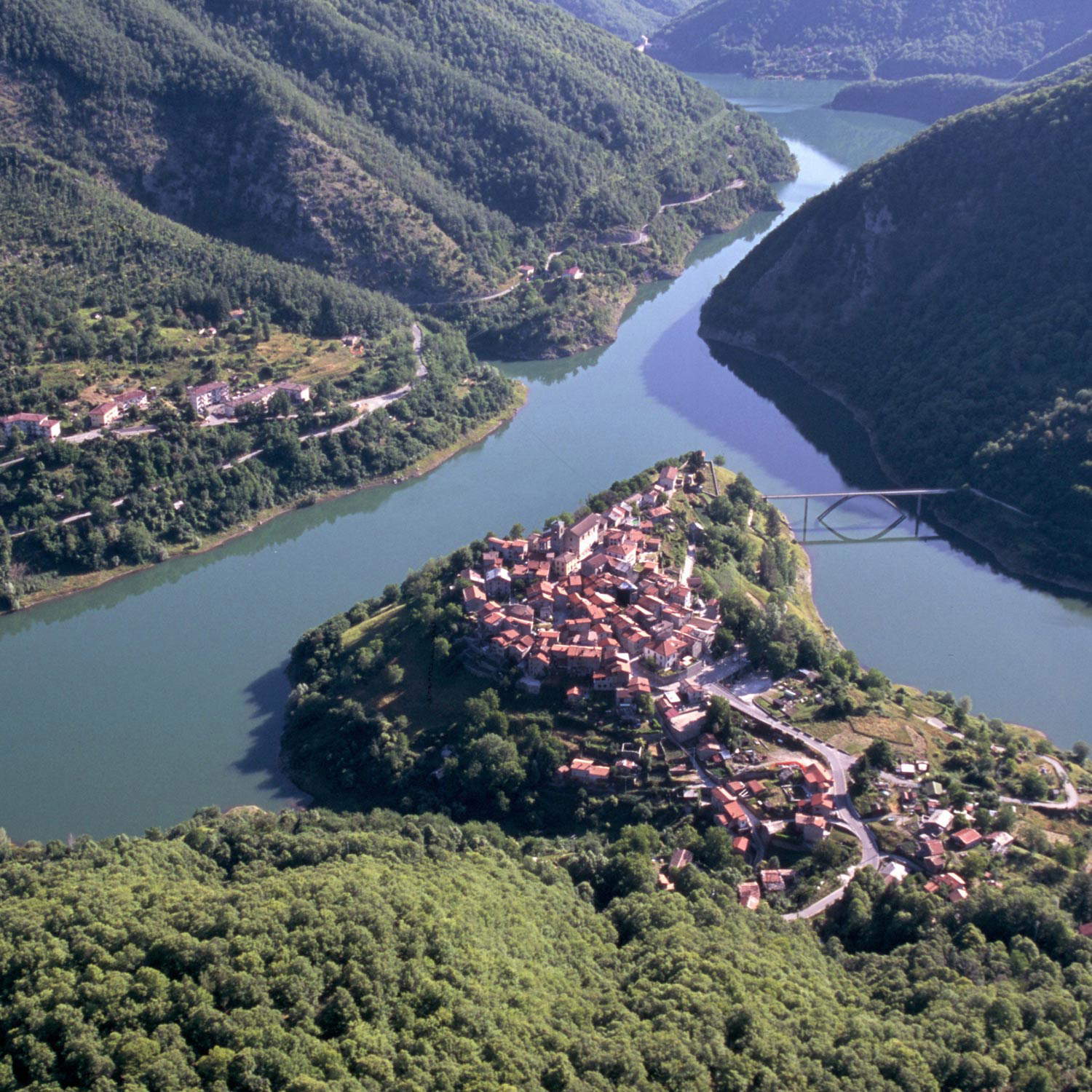
 |
| Apuan Alps, what to see: 10 places not to miss |
Warning: the translation into English of the original Italian article was created using automatic tools. We undertake to review all articles, but we do not guarantee the total absence of inaccuracies in the translation due to the program. You can find the original by clicking on the ITA button. If you find any mistake,please contact us.



























